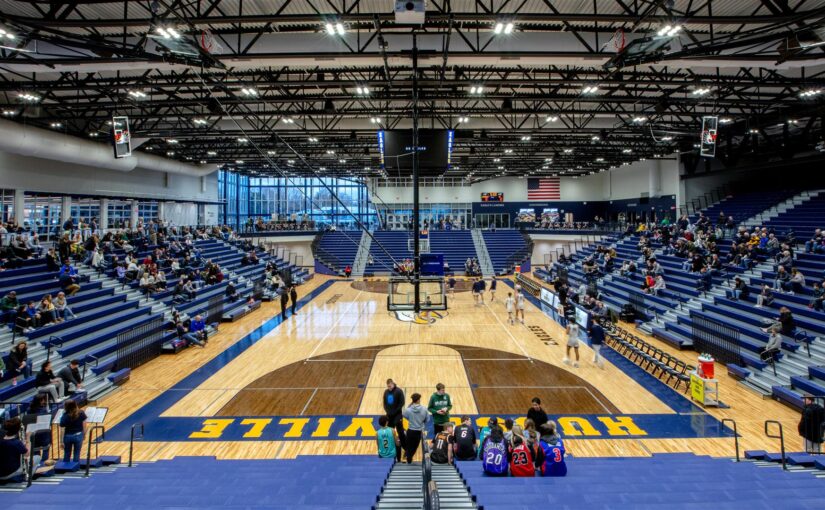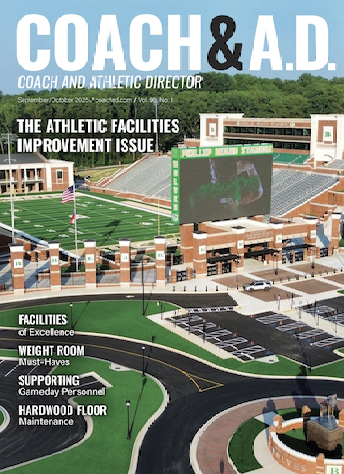Creating a culture of continuous professional development
Any athletic administrator who has completed the National Interscholastic Athletic Administrators Association’s (NIAAA) Leadership Training Course 504 knows that one of the fourteen legal duties is to provide training for their coaches. The term “training” is one way of describing continuing education or professional development. Of course, if you haven’t taken this vital course, doing so would be an essential starting point in your pursuit of professional competency and knowledge.
While this training requirement is straightforward and should be clear, how athletic directors approach this essential stipulation may vary, and some may need guidance. For some athletic directors, providing funds for their coaches to attend coaching clinics may typify and represent their efforts. However, hearing about new techniques for teaching sport-specific skills, offensive or defensive systems, and implementing game strategies represents only a very small, narrow part of what is involved in coaching within an education-based program. Much more is needed.
 In addition to the LTI 504 course, another NIAAA offering is LTC 723 – Providing Standards-Based Professional Development for Coaches. One of the basic premises of this course emphasizes that all schools or districts should have an ongoing professional development program for their coaches. All coaching education or professional development programs should be highly organized to meet the needs of all coaches, from new, inexperienced individuals to those with varying degrees of experience. But since there are always new developments, and to meet the needs of students, there is always more to learn.
In addition to the LTI 504 course, another NIAAA offering is LTC 723 – Providing Standards-Based Professional Development for Coaches. One of the basic premises of this course emphasizes that all schools or districts should have an ongoing professional development program for their coaches. All coaching education or professional development programs should be highly organized to meet the needs of all coaches, from new, inexperienced individuals to those with varying degrees of experience. But since there are always new developments, and to meet the needs of students, there is always more to learn.
One high school principal constantly stated to his students and teachers, “Learning is a life-long journey, and not a one-time destination.” This maxim applies to coaches and athletic administrators as well as to students and classroom instructors. In addition, Lee Iacocca, the former chief executive officer of the Chrysler Corporation, remarked at one of his annual shareholders’ meetings, “You are either moving forward, or falling behind. Because there is no such thing as remaining static or stationary.” Don’t these two statements accurately illustrate the need and purpose for continuing professional development for coaching staff? The answer should be, “Yes, absolutely!”
To determine what coaches should learn and to gain a level of mastery, an extremely important place to start is with the National Standards for Sport Coaches, that was developed by the professional association now known as the Society of Health & Physical Educators (SHAPE America). These national standards are detailed in seven core responsibilities that are comprised of forty-two specific standards, and the third edition was published in 2021.
Using the 42 standards to guide your efforts to create your professional development program for your coaches, it probably would not be feasible or practical to try to include all of them in one year. Therefore, you might want to identify a few that might specifically pertain to the needs of your staff, and also to hone in on any that may apply directly to items in need of improvement in your setting. But make no mistake, you, as an athletic administrator, are responsible for planning and organizing this program; a haphazard or laissez-faire approach won’t be successful.
Even though you are charged with conducting a professional development program for your coaches, you may wonder how you get your staff to embrace this professional growth and improvement approach. For some, they may intrinsically be motivated and embrace ongoing education in order to be the best that they can be.
For others, you may have to work at getting them onboard. For both groups, you should introduce and explain the purpose and value of your professional development program at your preseason coaches meeting. It is here that you detail how it will be conducted, what will be included, and what will be required of them. Beyond this initial, basic effort, what else can you do to encourage or motivate your coaches to embrace your educational initiatives?
- Get to know your coaches, because motivation comes down to being able to appeal to an individual’s interests or needs. While you may have some coaches who might be similar, most are unique and a little different. One standard approach may not work, and you might have to use several at the same time.
- Use PowerPoints, film clips, and other visual techniques in your sessions. By doing so, these tools will help to maintain the interest and focus of your coaches. Anything to get and keep them more involved should help.
- Utilize colleagues from neighboring schools, guest speakers, and individuals with specialized expertise to present topics within your program. If another athletic director conducts a session at your school, you could do the same for his or her staff. In this manner, both groups will receive the same basic, intended message, but this new, distinct voice may make all the difference.
- Provide refreshments whenever possible. Food and beverages seem to make meetings or instructional sessions more palatable for the attendees.
- Post notices on your websites and utilize social media to highlight the fact that your coaches have completed professional development initiatives.
- Recognition that the results will benefit student-athletes and the accompanying appreciation by parents and community members can be an important supportive aspect.
- Provide a hat, t-shirt, or some other teamwear at the conclusion of your professional development efforts for the year. This may be a small token of appreciation, but it recognizes the effort of your coaches to grow and develop to meet the needs of student-athletes.
» ALSO SEE: How to handle mental health issues in the female student-athlete
There is a long-standing expression that you can lead a horse to water, but you can’t make it drink. If you can adapt this truism to your professional development with your coaching staff, you can, and should, explain why this initiative is vitally important, and then guide them to see that it is in their best interest and that of their athletes. Maybe a couple of successful tastes involving more knowledge, competencies, and best practices is all that it will take for your staff to embrace this effort.





